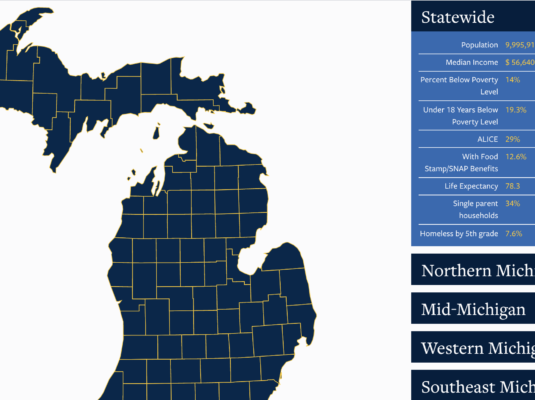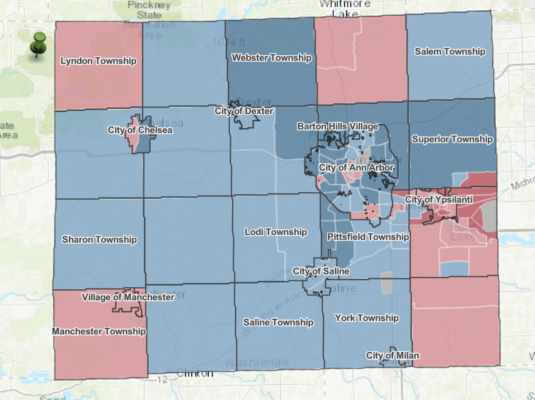Though poverty may seem a straightforward concept, how we define and measure it is a matter of great debate. And this debate is important, because how we measure poverty is central to how we define, understand, and improve well-being in our society. We are constantly confronted with articles and analyses describing the growth or decline in the poverty rate, a certain program’s impact on poverty, and how we can best eliminate poverty. But what does it all mean? How do we actually define what it is to be poor in the United States? And why do we do it at all?
We largely use poverty measures for two central reasons: to target resources to those in need, and to measure our progress in improving well-being in society.
The most common way we measure poverty in the United States is through the Official Poverty Measure (OPM), a measure of income poverty developed in the 1960s. The OPM sets a certain income threshold, which varies by family size and is pegged to the rate of inflation; households with incomes below that threshold are considered poor. In 2024, the OPM threshold for a family of four is $31,s00, and it’s estimated that in 2022, 11.5% of Americans were living beneath that OPM threshold. The OPM is the most commonly referenced poverty measure and is used in determining the eligibility criteria for a whole range of government programs.
Read our brief on what the U.S. spends on anti-poverty programs
Though the OPM is the most commonly used poverty measure in the United States, scholars and policymakers have long pointed to the weaknesses of the OPM as an accurate measure of well-being. The OPM thresholds we use today were largely developed by Mollie Orshansky, an economist working in the Social Security Administration in the early 1960s. President Lyndon B. Johnson’s administration operationalized the OPM in efforts to measure progress in its War on Poverty. Leaning on survey data that showed American households in the mid 1950s spent roughly one-third of their budget on food, the adopted threshold was set at three times a subsistence food budget as defined by the Department of Agriculture and adjusted for family size. Other than adjustments for inflation, this threshold is basically the same one we use today.
While there may be some utility in using a consistent measure over such a long period of time, the world has also changed considerably since the mid 20th century. For example, housing eats up far more of household budgets than it did in the 1960s, and food accounts for much less, meaning the current threshold fails to properly account for an adequate basic-needs budget in today’s world. In addition, the OPM is not adjusted for regional variation in cost-of- living, a significant flaw when the cost of housing varies considerably by geography. The OPM also fails to properly account for other essential household expenses, such as transportation and child care. Finally, the measure does not account for many in-kind benefits and tax credits meant to improve overall well-being in low-income households, meaning the Official Poverty Measure is unresponsive to many policies meant to combat poverty.
In 2011, the Census Bureau began publishing the Supplemental Poverty Measure (SPM) to address the shortfalls of the official measure. Rather than basing the threshold off historical food budgets, the SPM threshold uses expenditure data on food, clothing, shelter, and utilities. The SPM also accounts for regional variation in housing costs, and – perhaps most importantly – includes in-kind benefits and tax credits in overall household resources. This is important because while the OPM shows a relatively stable poverty rate over time, historical analyses using the SPM show that poverty has dropped considerably since the late 1960s, largely as a result of government programs.
While the SPM was developed in response to critiques of the OPM, many scholars believe any attempt to define a poverty threshold based on a “basic necessities” basket of goods is an inherently flawed approach in a wealthy democracy. Rather, these scholars believe that a relative poverty measure is more appropriate, defining the poverty threshold at 50% of a country’s median income, for example. A relative measure of poverty moves away from measuring the share of individuals facing absolute deprivation and seeks to measure the share of individuals who are unable to fully participate in society. Rather than trying to adjust and readjust an absolute threshold as costs, demands, and lifestyles of a particular society change, a relative threshold constantly adjusts to these changes, measuring who is being left behind. Many scholars believe that while an absolute threshold may be beneficial in a developing economy, a relative measure is far more useful in a wealthy democracy, allowing for better policy responses and more accurate cross-national comparisons of poverty. If we place the poverty threshold at 50% of a country’s median, the poverty rate in the U.S. rises to roughly 18%, far above the rate seen in other developed nations.
Still other scholars suggest that the use of any threshold – absolute or relative – may fail to accurately assess the state of well-being in the United States. The OPM, SPM, or even a relative threshold are all indirect measures of economic well-being, estimating the amount of resources a household requires to meet their needs. An alternative way to measure well-being, however, is by simply asking households directly about their ability to meet basic needs: do they have enough to eat, can they pay their bills, are they able to see a doctor when they need to? There are a number of surveys that seek to understand the state of material hardship in U.S. households – most notably the Survey of Income and Program Participation (SIPP) – and when these data are combined with the OPM and SPM, they offer a more holistic view of the state of well-being in America. For example, research finds that hardship often exists in households with incomes well above the poverty line, while some households in poverty – perhaps due to the aid of government programs – don’t demonstrate hardship. Relying on measures of material hardship, former Poverty Solutions postdoctoral scholar Richard Rodems found that roughly 45% of U.S. households move into and out of either material hardship or income poverty over a two-year period, presenting a picture of widespread economic precarity in the U.S.
Read the journal article on avoiding material hardship.









